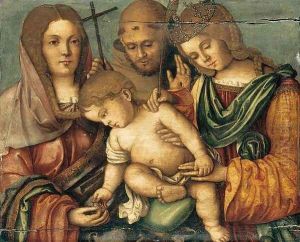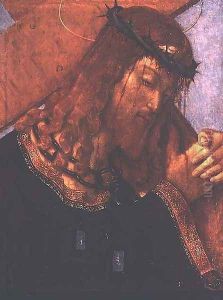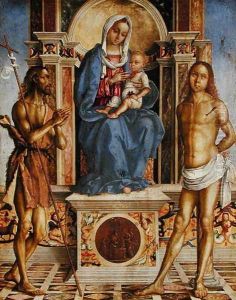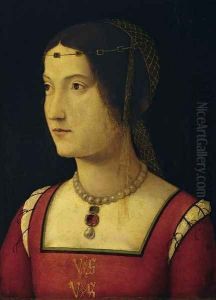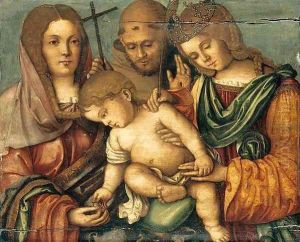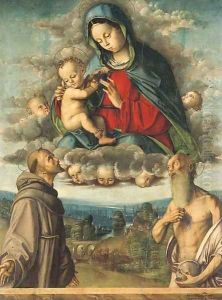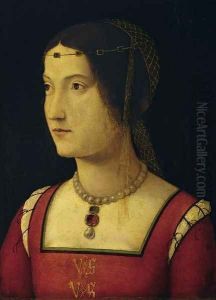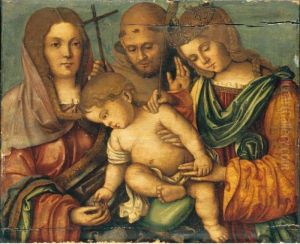Francesco Da Cotignola (see Zaganelli, Francesco di Bosio) Paintings
Francesco da Cotignola, also known as Francesco Zaganelli, was an Italian painter of the Renaissance period, born in Cotignola, a small town in the province of Ravenna, around 1475. He was the brother of Bernardino Zaganelli, with whom he often collaborated, and they are sometimes collectively referred to as the Zaganelli brothers. The two were active in their hometown, as well as in nearby cities such as Ravenna and Faenza.
Francesco was known for his religious paintings, which included altarpieces, frescoes, and smaller devotional works. His style was influenced by the works of other Renaissance masters such as Raphael and Lorenzo Costa, and he was part of the artistic movement that was spreading the Renaissance style throughout Northern Italy.
One of the distinguishing features of Francesco's work was his use of vibrant colors and his ability to convey deep religious sentiment through his paintings. He was particularly skilled in depicting the human form with a sense of grace and harmony, which was characteristic of the High Renaissance style.
Despite the collaborative nature of his work with his brother, Francesco's individual contributions to their joint projects were significant, and he was recognized for his talent during his lifetime. However, much of his work was later overshadowed by the more famous artists of the High Renaissance, and as a result, his contribution to the art world has not been as widely acknowledged as some of his contemporaries.
Francesco da Cotignola's exact date of death is not known, but it is believed he died around 1532. His works can still be seen in various churches and museums, offering a glimpse into the transitional period of the early 16th century when the Renaissance was beginning to take hold in Northern Italy.
